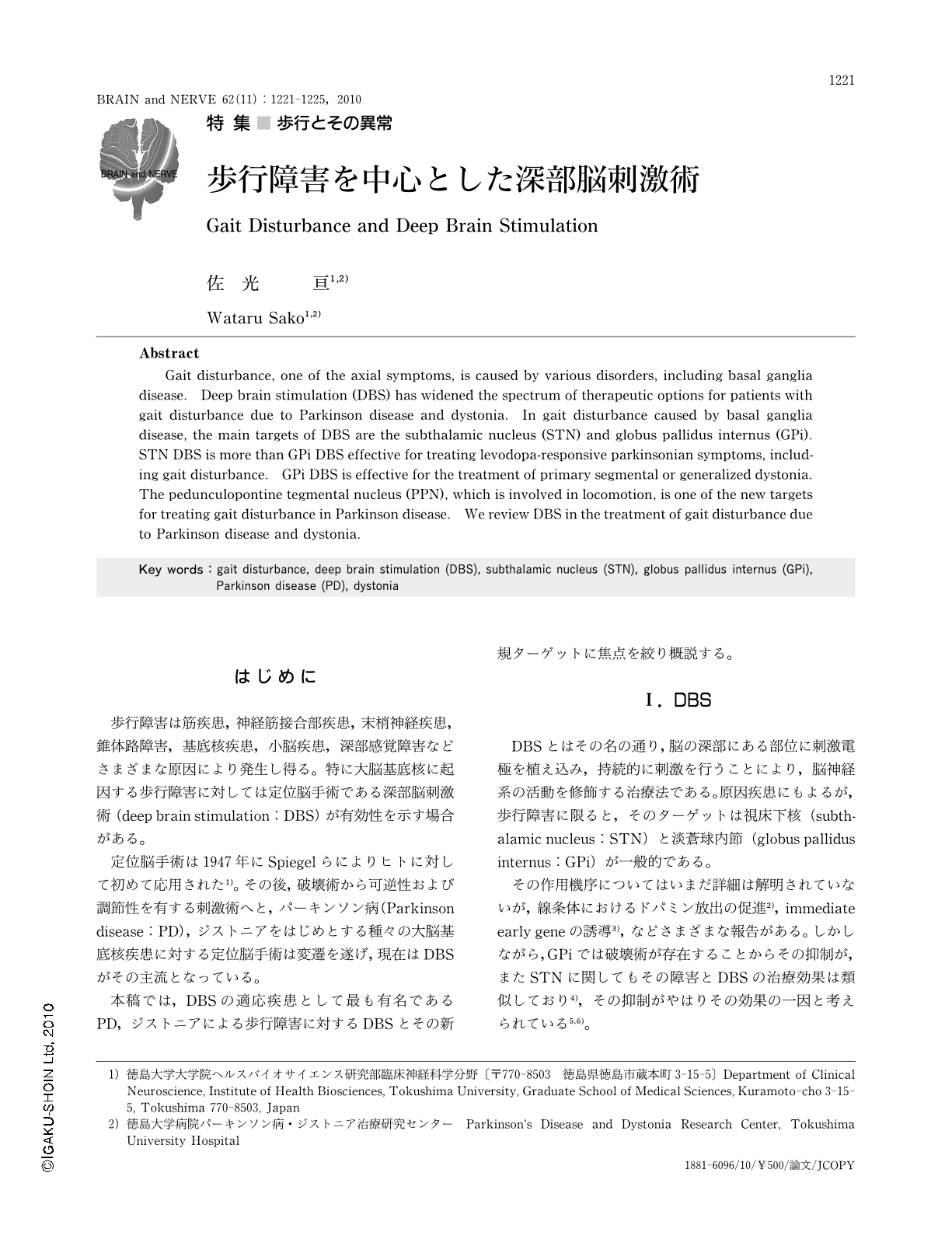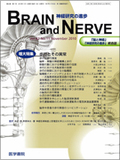Japanese
English
- 有料閲覧
- Abstract 文献概要
- 1ページ目 Look Inside
- 参考文献 Reference
はじめに
歩行障害は筋疾患,神経筋接合部疾患,末梢神経疾患,錐体路障害,基底核疾患,小脳疾患,深部感覚障害などさまざまな原因により発生し得る。特に大脳基底核に起因する歩行障害に対しては定位脳手術である深部脳刺激術(deep brain stimulation:DBS)が有効性を示す場合がある。
定位脳手術は1947年にSpiegelらによりヒトに対して初めて応用された1)。その後,破壊術から可逆性および調節性を有する刺激術へと,パーキンソン病(Parkinson disease:PD),ジストニアをはじめとする種々の大脳基底核疾患に対する定位脳手術は変遷を遂げ,現在はDBSがその主流となっている。
本稿では,DBSの適応疾患として最も有名であるPD,ジストニアによる歩行障害に対するDBSとその新規ターゲットに焦点を絞り概説する。
Abstract
Gait disturbance,one of the axial symptoms,is caused by various disorders,including basal ganglia disease. Deep brain stimulation (DBS) has widened the spectrum of therapeutic options for patients with gait disturbance due to Parkinson disease and dystonia. In gait disturbance caused by basal ganglia disease,the main targets of DBS are the subthalamic nucleus (STN) and globus pallidus internus (GPi). STN DBS is more than GPi DBS effective for treating levodopa-responsive parkinsonian symptoms,including gait disturbance. GPi DBS is effective for the treatment of primary segmental or generalized dystonia. The pedunculopontine tegmental nucleus (PPN),which is involved in locomotion,is one of the new targets for treating gait disturbance in Parkinson disease. We review DBS in the treatment of gait disturbance due to Parkinson disease and dystonia.

Copyright © 2010, Igaku-Shoin Ltd. All rights reserved.


